
THE MICROPLASTIC BASICS:
I was on a beautiful beach just off the coast in Thailand a few months ago. On one side of this small island we were visiting was pure pristine beach but the other side had a ton of plastic that had washed ashore. I mean a ton! I had never seen this much garbage on a beach before. We saw plastic bottles, straws and grocery bags and so much more. My sister went out snorkeling and said when she swam back to the shore she had to move the plastic debris with her hands to get to the shore. It was appalling and disgusting. This is only one of many visible signs that I have seen that have illustrated society’s obsession with plastic.
But what I want to talk about today is not the big plastic pieces, but the little tiny ones. These are called microplastics and they are so little, we can barely see them. However, this is a huge problem. Let me tell you why.
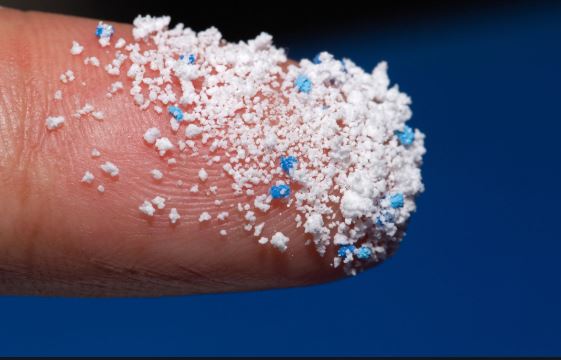
Scientists say there is another source of plastic pollution that is just as common and even more difficult to clean up. This plastic pollution hiding in our clothes. A lot of clothing contains synthetic fabrics such as polyester, acrylic or nylon that are essentially constructed from thin plastic fibres made from crude oil, a fossil fuel. These fabrics have become prolific in our closets because they are very cheap and durable to make. A lot of clothes that are made with synthetic fabrics include stretchy stuff, workout clothes, fleece, water-resistant rain-wear, T-shirts and dresses. There are pros and cons to these synthetic crude oil fibres. However, I am here to discuss a negative aspect of these synthetic fabrics.

Every time you wash your clothes, mini microfibres come off your clothing. These mini fibres come off of both natural and synthetic fabrics. However, it’s the synthetic fabrics made from crude oil that cause most of the microplastics.
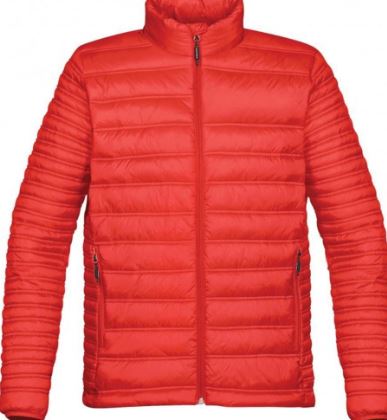
A 2016 study by researchers at the University of Plymouth in the UK estimated that up to 700,000 microfibers could be released in a single load of laundry, roughly equivalent to the surface area of a pack of gum. The water from your washing machine heads from the drain, to your local wastewater treatment system (if you’re lucky to have one), and then into the ocean. Most of the microplastics fibres bypass the filters of the treatment system. However, some of them get recycled into “bio-solids” which can be applied to the land as a fertilizer. As you can see, the spread of these fibers is much more difficult to control than larger pieces.
Emily Woglom, the executive vice president of the Ocean Conservancy, a nonprofit environmental group based in Washington said, “Once microplastics get into the environment, you can’t sieve the entire ocean. The focus has to be on doing as much as you can to prevent the waste in the first place.”
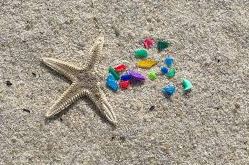
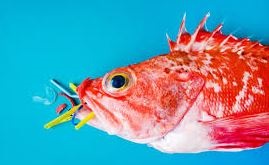
The problem with these microplastics is they are getting eaten by fish, sharks, dolphins and other beautiful creatures that live in the oceans. Humans that eat the fish are potentially at risk as well,
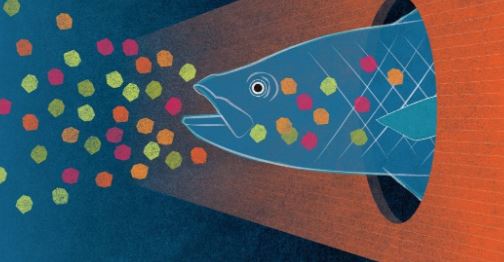
Some companies in the apparel industry that are spending time and effort on this issue are: Patagonia, Mountain Equipment Co-op and Arc’teryx, leading the way. Patagonia, based in Ventura, California, worked with researchers at the University of California, Santa Barbara, in 2014 to explore the extent of microfiber pollution. That research, which culminated in a study published in the journal Environmental Science & Technology in 2016, examined microfiber shedding from four synthetic fleece Patagonia jackets and one from another brand. The scientists found that when the garments were washed, an average of 1.17 grams of microfibers were released. The study also found that the amount of shedding was influenced by the type of washing machine used.

Top-load machines saw seven times as many microfibers released compared to front-load washing machines. This was because front-load washing machines tend to use less water and the tumbling motions are less rigorous, according to Stephanie Karba, who co-authored the study as a graduate student at the University of California, Santa Barbara.
One solution to prevent these micro plastics from getting into the wastewater is to use a reusable washing bag called “Guppyfriend,” developed by a nonprofit organization called Stop! Micro Waste. Consumers can place their fleece jackets and other synthetics inside the Guppyfriend and then toss the bag, which retails for about $30, into the washing machine, where it collects some of the released microfibers.
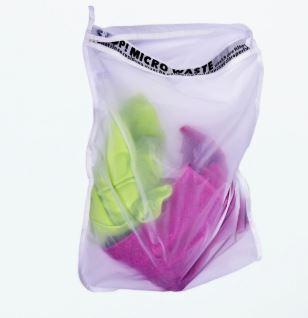
The most commonly accepted estimate for the amount of plastic that ends up in the ocean each year is 8 million metric tons. Of that, microplastics are thought to make up an estimated 1.5 million tons, and a 2017 report by the International Union for Conservation of Nature estimated that about 35 percent of microplastics that enter the world’s oceans comes from synthetic textiles.
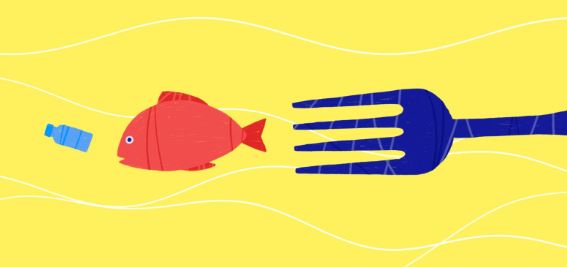
So what can you do?
- Read the labels before you buy anything. Make an informed choice regarding the clothing you purchase and what it is made from
- Try and purchase less synthetic materials made from fossil fuels like crude oil (polyester, acrylic, nylon, polypropylene and elastane)
- Purchase used clothing
- Wash your clothes less
- Buy a Guppyfriend bag
- Use a front load washing machine
- Wash in cold water
If you have any questions about this post or sustainability, please contact us.
Moda Circolare is committed to helping the fashion live in harmony with nature. We conduct sustainability assessments to help companies understand where they are in terms of sustainability and where they want to get to. If you want to know more about the basics of how to become more sustainable as a company, please read our 5 tips for becoming more sustainable.
Error: Contact form not found.
